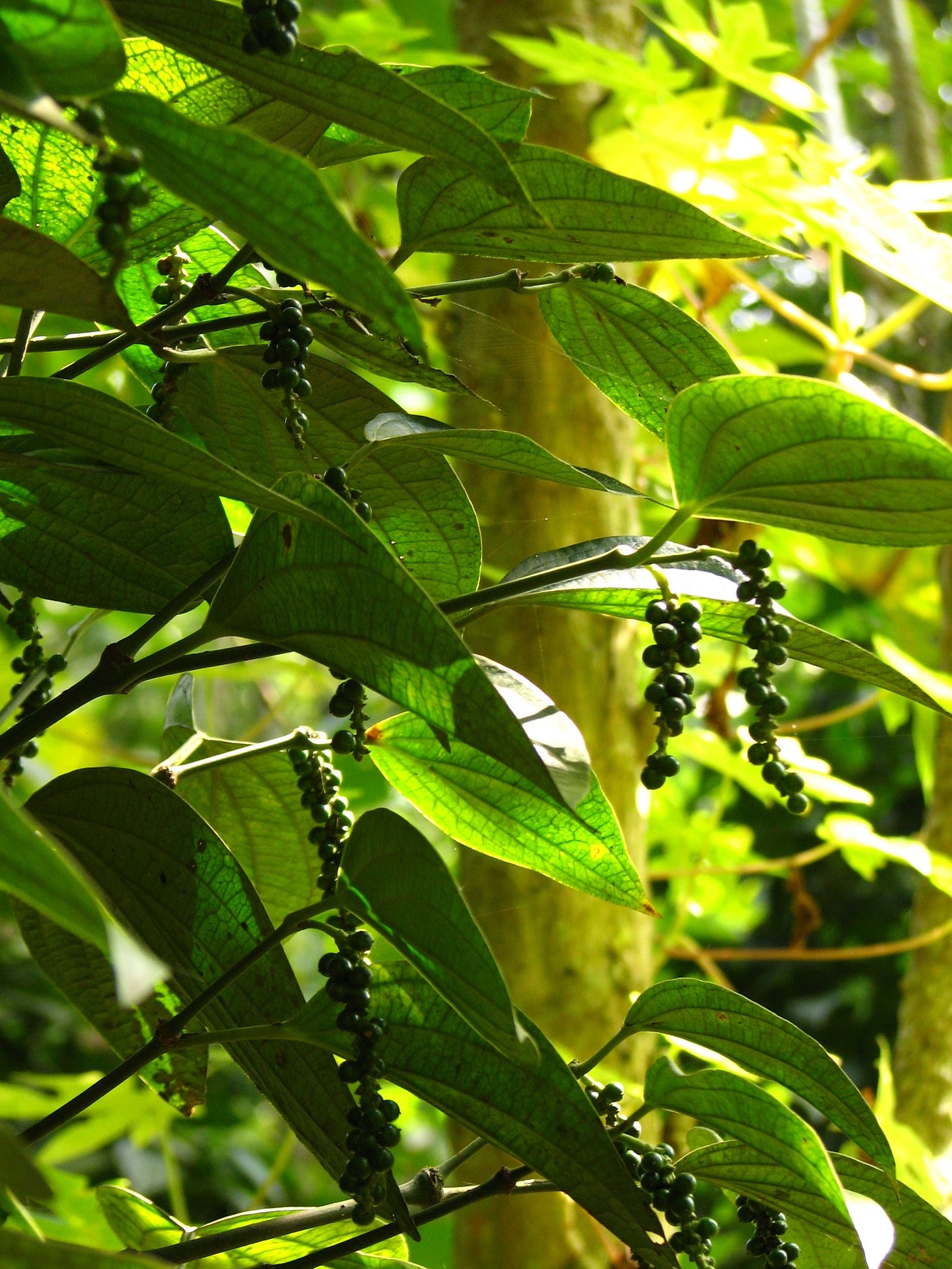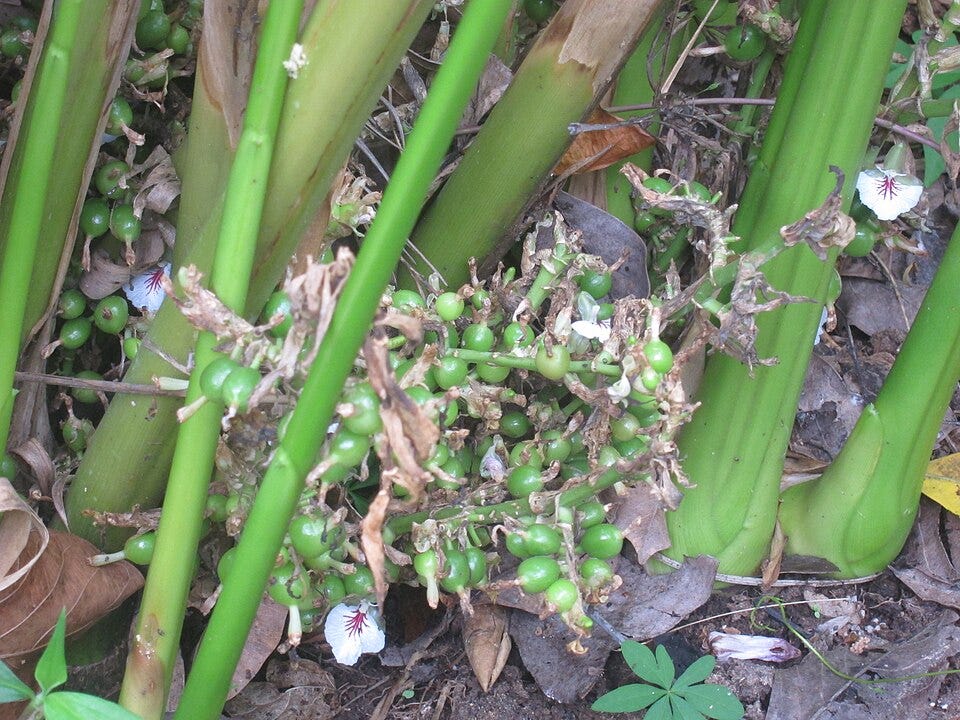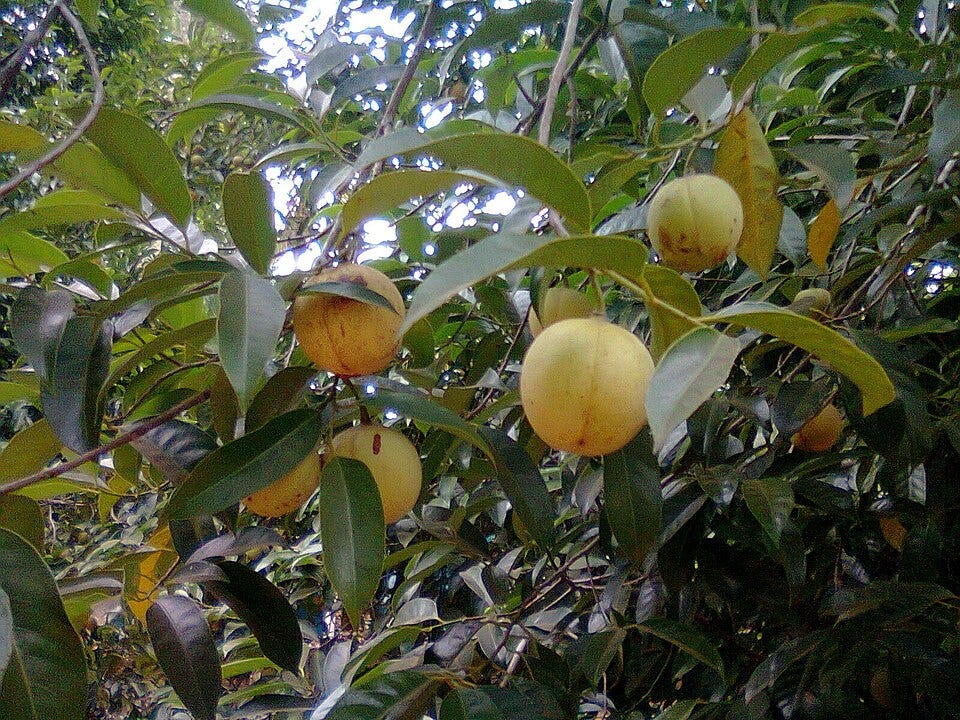Why Kerala Needs to Quickly Shift to Exporting Premium Spices
Kerala’s spice trade must meet global quality standards to reduce impact from higher U.S. import tariffs says Sunil Mani
(Photo: A pepper vine, Kerala. Courtesy Creative Commons.)
August 27, 2025
By Sunil Mani*
Starting today, India’s exports of goods to the United States will drop further due to a second increase in tariffs, which now total 50%.
The U.S. is India’s largest export market buying $87 billion in goods in fiscal year ended March 2025. Textiles, diamonds and jewelry, and seafood, which together make up about a quarter of India’s exports to the U.S., are among the most vulnerable to the increased tariffs, according to CRISIL, a rating agency.
In 2024, India sold roughly $22 million of black pepper to the U.S., an eighth of the total exports of the spice, and about $17 million of cardamom and nutmeg, about 7%. of such exports Though sales to the U.S. account for a small portion, U.S. tariffs will hurt the total revenues received by Indian exporters of the three spices.
The commodities are an important part of the economy of Kerala, which has a population of 36 million. Nearly a third of India’s black pepper production, three quarters of cardamom, and the entire nutmeg crop is grown in the southern Indian state. The spice business is the major source of income for thousands of small farmers and laborers in the hilly Western Ghat region of the state, especially in Idukki, Wayanad, Kottayam, and Thrissur districts.
In 2024, India's production of pepper was about 60,000 tonnes. Apart from a one-time rise in 2024, annual domestic consumption is estimated to be around 45,000 tonnes. Pepper, which is used in small amounts for everyday cooking, has several commercial applications including for extracting oil, oleoresins, and pharmaceutical ingredients.
Vietnam is the world’s largest producer and exporter of pepper, with more than half of the global output. Other major producers include Indonesia and Brazil.
This year, worldwide production of pepper is estimated to be around 434,000 tonnes, continuing a downward trend. Consumption, which has risen steadily, is roughly 460,000 tonnes. Since 2023, the shortfalls in supply have led to a doubling of prices. Indian pepper currently trades around $7 per kilogram in global markets, similar to prices for those from Vietnam. The prices are before tariffs.
Given the sharp rise in prices, growers are planting more pepper vines. But their impact on supply is a few years away. The climbing vines take about three to four years, from planting, to produce a first crop. A well-maintained vine can annually yield peppercorns, berry-like fruits, for 20 to 25 years, with peak harvests between the seventh and fifteenth years. Replanting is necessary only when the output falls sharply due to age or when the vines are diseased.
(Photo: A cardamom plant, Kerala. Courtesy Creative Commons.)
In India, pepper growers are not the primary beneficiaries of the recent jump in prices. Typically, spice supplies in Kerala flow from growers to traders or cooperatives, then to local processors and exporters, before reaching foreign brokers or importers and, ultimately, food processors and retailers in the foreign markets.
Growers, being small landholders, have little bargaining power. Processors and exporters in Kochi play a big role in setting the prices received by growers, based on quality assessments, certification compliance, and export demand. There is very little direct sales by growers to foreign buyers.
Nearly 90% of India’s output of cardamom and nutmeg is consumed domestically, estimated at a combined 50,000 tonnes per year. Though India exports a small portion of its output, it is a major exporter of both these spices, competing against Guatemala, Indonesia, and Sri Lanka.
The global price for Indian cardamom average about $19 per kg for raw kernels and $29 per kg for ground cardamom. Whole, uncrushed nutmeg prices average about $6 per kg in global markets. However, nutmeg growers in Kerala receive around $3 per kg, due to excess local supply and no direct access to foreign buyers.
The United Arab Emirates (UAE) accounts for more than a third of India’s cardamom sales, closely followed by Saudi Arabia and Kuwait. India’s nutmeg exports are more broadly spread, including sales to Indonesia, Vietnam, and Sri Lanka, all major competitors in the global trade of the spice.
Due to the 50% tariffs, the prices of India’s pepper exports to the U.S. are roughly a third higher than those from Vietnam, which face a 20 % tariff. Similarly, post-tariff prices of Indian cardamom sold to the U.S. are 40% higher than that from Guatemala, while nutmeg prices are a third higher than that from Indonesia.
Bulk Indian exports of the three spices will be severely hurt. Such buyers, who are mainly in the Middle East, seek low prices and not premium quality spices.
Even with India’s bulk exports being hit, some forecasters estimate that, in the worst case, U.S. tariffs will cause a maximum 25% drop in the overall value of India’s exports of pepper, cardamom, and nutmeg. They are optimistic that demand will hold steady from food processors, gourmet retailers, and South Asian grocery chains in the U.S., since Vietnamese, Guatemalan or Indonesian alternatives cannot replicate the unique flavors of spices from Kerala.
Additionally, some of India’s spice exports are expected to continue securing higher prices, including in the U.S.. This is because of the demand for higher value extracts such as piperine, from black pepper, cardamom oil, and nutmeg oil. The spices are also key ingredients in Ayurvedic formulations which are exported as herbal supplements and nutraceuticals.
However, even a small drop in India’s spice shipments to the U.S. will lead to more supplies available for other export markets. The buyers in other countries will seek price cuts from Indian exporters. And Vietnam, Indonesia, and Guatemala will likely protect their spice exports by matching any price reduction by Indian sellers.
(Photo: A nutmeg tree, Kerala. Courtesy Creative Commons.)
No data is available on how much subsidies and other financial help is given by Indian government agencies to the growers and exporters of spices. Currently, they are unlikely to get much help since the financial resources of the agencies are limited. Also, much of the financial assistance is likely to go to exporters of diamonds, chemicals, and cotton textiles, given their clout in key political states like Gujerat.
Last week, K N Balagopal the Finance Minister of Kerala, warned that the U.S. tariffs would hurt the state’s exports of spices, in addition to seafood, tea, coffee, and coir exports. To avoid a sharp decline in the price of spices, the growers and government of Kerala must urgently implement remedial measures.
Growers must shift to premium crops and attain certifications, notably that of the American Spice Trade Association (ASTA) and European Union’s organic, pesticide-free and other labels. Indian growers are at a disadvantage since much of the competing exports from Vietnam, Guatemala, and Indonesia meet ASTA and other global standards.
To help attain the global certifications, Kerala government agencies should expand traceability of a crop; monitor compliance with premium quality benchmarks; and establish more processing facilities, including for value added products like cardamom oil, which meet the highest global standards.
Besides rising demand, the economic benefit of selling premium spices is clear. For instance, premium small Indian cardamom sells for around $33 per kg at auctions, double the price for the bulk variety. Similarly, Malaysia’s ASTA grade pepper sells for around $9 per kg, roughly 50% higher than that of the bulk commodity.
In addition, the Kerala government and the Spice Board should help set up online sites for growers to sell directly to foreign buyers. Perhaps they may be reluctant to do so given the power of local traders, processors, and exporters. So, the growers should set up co-operatives to sell spices online. If such portals existed today, nutmeg growers in Kerala would receive around $6 for their crop in foreign markets, double what they are paid by local traders and processors.
There are some early steps in direct sales by growers. The Rainforest Alliance, a group influential with western consumers who care about the environment, has certified three smallholder groups and one cardamom farm in Kerala. Then, there is Looms & Weaves, a social enterprise founded by Christy Tressa George. Based in Kerala, it markets organic spices, such as Alleppey Green Cardamom, through its own e-commerce platform as well as through Flipkart and other major Indian online retailers.
Kerala already enjoys a strong reputation in Western countries for its acclaimed Ayurvedic, yoga and cooking resorts, thanks to wide media coverage and word-of-mouth publicity by tourists. This makes it easier to position spices from Kerala as premium brands and boost global demand, including in the US, even with 50% tariffs.




